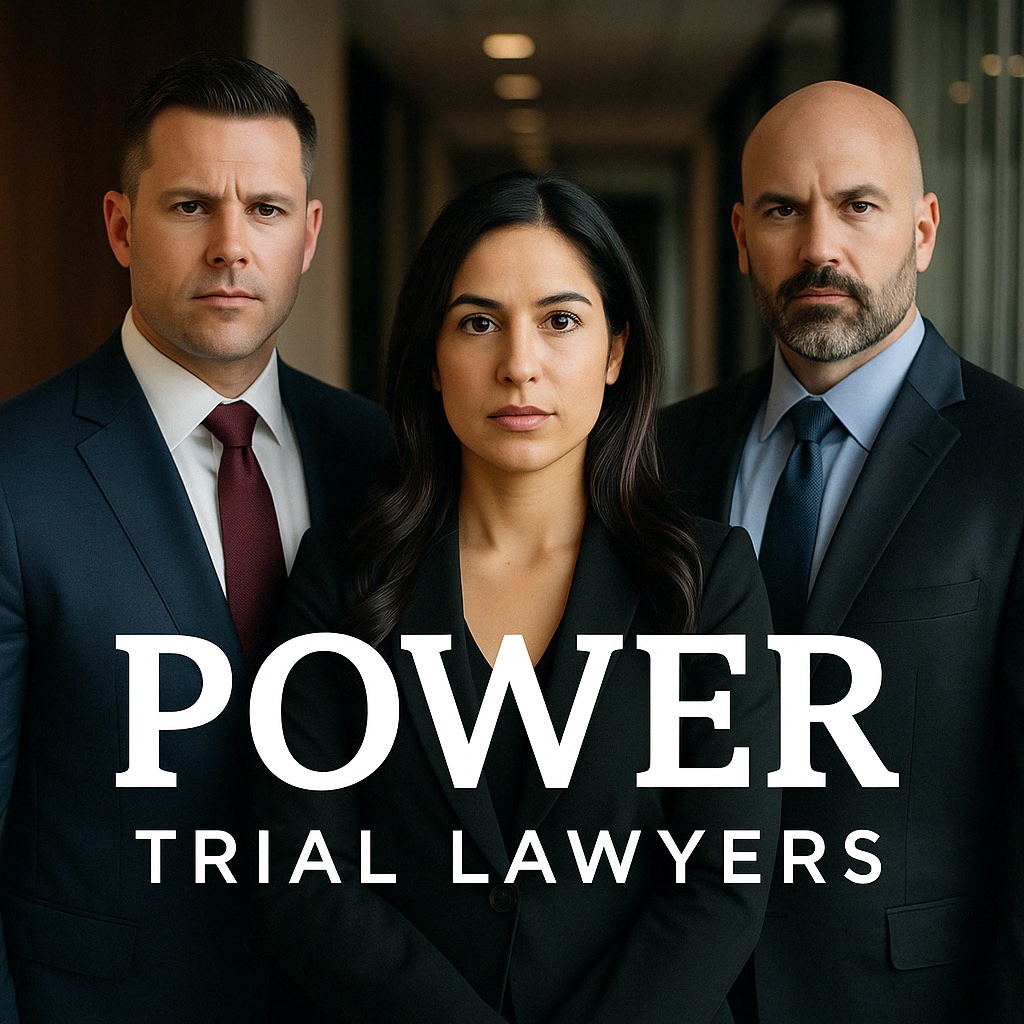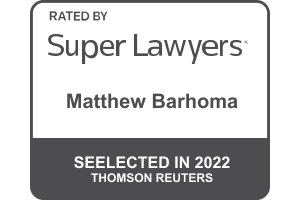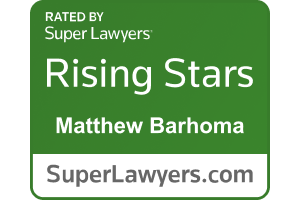- Free Consultation: (888) 808-2179 Tap Here to Call Us
10 Critical Steps to Take If You’ve Been Served With a Restraining Order in Southern California
Southern California Restraining Order Attorney Discuss 10 Critical Steps Once You’ve Been Served With a Restraining Order
Introduction: Why Immediate Action Is Critical When You Are Served With a Restraining Order in Southern California
Being served with a restraining order in Southern California is not merely an inconvenience or a private dispute—it is a formal legal action with immediate and enforceable consequences under California law. Once a temporary restraining order (TRO) is issued, it is automatically entered into the statewide CLETS system and is enforceable by every law enforcement agency the moment you are served. If you have been served with a Restraining Order, consult with a Southern California restraining order attorney.
Whether the order is a Domestic Violence Restraining Order (DVRO), a Civil Harassment Restraining Order (CHRO), a Workplace Violence Restraining Order, or an Emergency Protective Order (EPO), your first twenty-four to forty-eight hours are critical in shaping the outcome of your case.
Courts across Los Angeles County, Orange County, Riverside County, San Bernardino County, and San Diego County process thousands of restraining order cases every year. Judges in these regions expect respondents to take the process seriously, comply fully with the temporary orders, and appear at the hearing prepared with admissible evidence.

A restraining order can affect your:
- Ability to live in your home
- Ability to contact your children
- Right to possess firearms
- Immigration status
- Employment and professional licensing
- Criminal exposure (violations can lead to Penal Code § 273.6 charges)
- Future family-law proceedings
This is why it is essential to understand your rights, comply with the temporary restrictions, preserve your evidence, and consult with a knowledgeable Southern California restraining order attorney as soon as possible.
This article provides a master-class breakdown of the ten most important steps you must take immediately. It combines judicial clarity, practical instruction, and an inside look at the courtroom expectations in the major counties of Southern California.
Step 1 — Read the Entire Restraining Order Packet Carefully
When you are served with a restraining order, you will typically receive a packet that includes several critical documents. Respondents often skim them and miss crucial details, which can lead to unintentional violations or preventable mistakes at the hearing.
The packet typically includes:
- DV-110 or CH-110 (the temporary restraining order)
- DV-100 or CH-100 (the petitioner’s allegations)
- DV-109 or CH-109 (the notice of court hearing)
- CLETS-001 (the confidential law enforcement sheet)
- Blank response forms (DV-120 or CH-120)
- Local court notices or filing instructions
Your first task is to read every page slowly and carefully. The temporary orders take effect immediately. Judges expect respondents to understand the stay-away distances, no-contact instructions, firearms prohibitions, and move-out orders at the moment of service.
Respondents commonly overlook the following:
The hearing date. This is non-negotiable. If you do not show up, the court can issue a multi-year order against you without hearing your side.
The scope of the stay-away provisions. Some orders restrict contact at home, some at work, some at school, and some prohibit all contact anywhere.
The evidence alleged by the petitioner. The DV-100 or CH-100 may include screenshots, timelines, declarations, or statements that must be addressed in your response.
Firearm surrender requirements. Courts enforce these strictly. If the restraining order includes a firearm prohibition, failure to comply can result in criminal charges or the loss of valuable rights.
Understanding what is inside your packet is the foundation of your defense. A seasoned Southern California restraining order attorney will use these documents to build your response, challenge inaccuracies, and develop a courtroom strategy.
Step 2 — Calendar the Hearing Date and All Deadlines Immediately
Your hearing date is one of the most important dates you will ever place on a calendar. Restraining order hearings in California move quickly—usually within 21 to 25 days of the issuance of the temporary order.
You must calendar:
- The hearing date
- The deadline to file your written response (ideally at least 5–7 days before the hearing)
- Any deadline to request a continuance
- Internal deadlines to gather evidence, statements, and exhibits
The hearing is your only opportunity to prevent a temporary restraining order from becoming a long-term or permanent order. Courts in Southern California have high caseloads, and judges do not grant second chances when a respondent fails to appear.
Courts across the region operate differently:
- Los Angeles County (CCB, Van Nuys, Compton, Pomona, Long Beach): Judges expect organized, timely filings and well-structured evidence.
- Orange County (CJC, Harbor, North, West): These courts strictly enforce filing rules and require evidence to be organized and tabbed.
- Riverside County (Riverside HOJ, Murrieta, Indio): Judges often address continuances quickly and expect both parties to be ready.
- San Bernardino County (San Bernardino JC, Rancho, Victorville): Evidence presentation and witness credibility play a central role.
- San Diego County (Central, Vista, Chula Vista, El Cajon): Courts expect precision and clarity in declarations and exhibits.
Missing the hearing can lead to a three-year, five-year, or even longer restraining order being issued against you by default.
A Southern California restraining order attorney will ensure that every deadline is met, that your response is timely, and that you are properly prepared for the hearing.
Step 3 — Obey the Order Completely, Even If the Allegations Are False
It is natural to feel offended, shocked, or angry when you receive a restraining order—especially if the allegations are exaggerated, misleading, or fabricated. Many respondents want to immediately contact the petitioner, explain their side, or attempt to clear up a misunderstanding.
Doing so is a grave mistake.
Once you are served, the restraining order is enforceable immediately.
There is no “grace period,” no warning system, and no leniency for “accidental” contact.
Courts apply a zero-tolerance standard. Any violation can result in:
- Arrest
- Criminal prosecution under Penal Code § 273.6
- A negative inference at the hearing
- A permanent restraining order
- Loss of custody rights
- Immigration consequences
This includes:
- Texts, calls, or DMs
- Replies to social media posts
- Indirect messages through mutual friends
- Driving past the petitioner’s home
- Appearing at the petitioner’s workplace
- Sending gifts, apologies, explanations
- Comments on posts or stories
- Accidental violations arising from shared locations
If the order includes firearm restrictions, you must follow the surrender process exactly as required by the court. These firearm conditions are strictly enforced across all Southern California counties.
Even if you believe the allegations are entirely false, your first responsibility is to comply. A Southern California restraining order attorney will later show the court that you followed the law and conducted yourself responsibly.
Step 4 — Preserve All Evidence Immediately
Your defense depends on evidence, and the process of gathering and protecting it must begin right away. Restraining order cases move quickly, and judges rely heavily on documentation.
You must preserve:
- Text messages (including timestamps)
- Screenshots
- Emails
- Social media messages
- Call logs
- Voicemails
- Location metadata
- Photos, videos, and Ring/Nest security footage
- Receipts, GPS history, or digital activity logs
- Witness names and statements
- Past threats, harassment, or manipulation from the petitioner
Evidence that contradicts the petitioner’s claims is extremely powerful—for example:
- Messages showing cordial communication after the alleged incident
- Screenshots proving the petitioner initiated contact
- Footage showing you were not present where the petitioner claims
- Texts showing threats to file false accusations
- Witness statements contradicting the petitioner’s narrative
Security footage is especially important, as many systems automatically overwrite older recordings. A Southern California restraining order attorney will help you gather, authenticate, and prepare this evidence for presentation in court.
Step 5 — Document False Allegations, Manipulation, or Critical Context
Many restraining order cases in Southern California involve allegations that are exaggerated, incomplete, taken out of context, or strategically timed. Courts see this frequently. The petitioner’s declaration (DV-100 or CH-100) often includes generalized claims without dates, descriptions that lack specificity, or omissions of important context.
This is where your documentation becomes essential.
Judges across Los Angeles, Orange County, Riverside, San Bernardino, and San Diego counties are highly sensitive to credibility issues. They examine whether the allegations are supported by evidence, timelines, and consistent behavior after the alleged incident.
You must begin documenting:
1. Motivation and context.
Restraining orders may stem from breakups, custody disputes, financial disagreements, landlord–tenant hostility, roommate disputes, or workplace friction.
2. Contradictions in the petitioner’s story.
- Allegations that don’t match text messages
- Missing dates or unclear timelines
- Claims contradicted by photos or video
- Assertions that conflict with the petitioner’s prior behavior
3. Prior threats from the petitioner.
Courts take great interest when a petitioner previously threatened to:
- “Call the police”
- “Get a restraining order”
- “Ruin your life”
- “Make sure you can never see the kids again”
4. Evidence of continued friendly or loving communication after the alleged incident.
Judges question why a petitioner remained in friendly contact after asserting fear.
5. Manipulative behavior.
Sometimes the petitioner attempts to provoke a violation after filing the TRO—for example, by contacting you to “apologize” or “talk things out.” These attempts must be documented because contacting them is still a violation, even if they initiate.
A seasoned Southern California restraining order attorney will help you develop this evidence into a coherent, judge-ready narrative that undermines unfounded or manipulative accusations.
Step 6 — Avoid All Contact With the Petitioner
Regardless of how unfair or inaccurate the allegations may be, you cannot contact the petitioner under any circumstances. Courts strictly enforce no-contact provisions, and even the appearance of contact can cause serious problems.
Contact includes:
- Texts, calls, emails
- DM’s on any platform
- Viewing or interacting with stories, posts, or tags
- Comments on public posts
- Asking mutual friends to intervene
- Deliveries, gifts, or apologies
- “Checking in” to avoid misunderstandings
- Drive-bys, waiting outside a residence, or appearing at known locations
- Responding to messages sent by the petitioner
If a petitioner contacts you first, you must not respond. Judges expect the restrained party to maintain absolute compliance. Save the messages and give them to your attorney.
Southern California courts adopt a zero-tolerance policy—especially Los Angeles, Orange County, and San Diego, where violations are often treated as criminal conduct. Even accidental encounters (for example, at a shared gym or workplace) must be handled with extreme care.
A Southern California restraining order attorney will explain exceptions, carve-outs, and how to prevent unintentional violations. They will also instruct you on how to behave if the petitioner tries to bait you into violating the order.
Step 7 — Stay Completely Off Social Media About the Situation
Social media misuse destroys otherwise strong cases. Judges increasingly rely on digital evidence to evaluate credibility, emotional instability, or aggressive behavior.
You must avoid:
- Posting about the case
- Posting about the petitioner
- Venting online
- Subtweeting or posting song lyrics aimed at the petitioner
- Posting screenshots of the restraining order
- Posting photos showing alcohol use, confrontations, or volatile emotional states
- Messaging through fake accounts
- Posting stories that include locations the petitioner may also attend
Even a harmless post can be taken out of context. And deleting posts can appear like an attempt to hide evidence—courts are sensitive to spoliation.
In Southern California, especially in Los Angeles and Orange County, courts frequently admit digital evidence as exhibits. Both judges and opposing attorneys regularly comb through Instagram, TikTok, Snapchat, Facebook, and X (Twitter).
A Southern California restraining order attorney will advise on digital hygiene during the pendency of the order and ensure that your online presence does not undermine your credibility in court.
Step 8 — Contact a Southern California Restraining Order Attorney Immediately
Restraining order hearings in Southern California are deceptively complex. Many people assume they can defend themselves with a simple explanation. Unfortunately, they quickly learn that these proceedings function like mini-trials, requiring evidence, declarations, exhibits, cross-examination, and strict procedural compliance.
This is where hiring a Southern California restraining order attorney becomes critical.
Restraining order attorneys familiar with local courts understand:
- Each courthouse’s preferences and culture
- Each judge’s expectations
- Filing requirements
- Procedural timing
- Evidence formatting rules
- How continuances are handled
- What arguments do or do not persuade Southern California judges
Different courts in the region operate differently:
Los Angeles County
(Stanley Mosk, Santa Monica, Long Beach, Van Nuys, Pasadena, Pomona)
Judges expect strong organizational structure, clean formatting, clear timeline presentations, and well-supported declarations.
Orange County
(Central Justice Center, North, Harbor, West)
These courts emphasize procedural precision. Evidence must be tabbed, indexed, and chronologically structured. Judges here scrutinize credibility closely.
Riverside County
(Riverside HOJ, Corona Courthouse, Southwest Justice Center in Murrieta, Larson in Indio)
Calendars move quickly. Continuances are available but must be justified. Judges expect sophisticated presentation.
San Bernardino County
(San Bernardino JC, Victorville, Rancho Cucamonga, Fontana)
Judges often focus on the factual record and witness credibility.
San Diego County
(San Diego Central, Vista, El Cajon, Chula Vista)
Evidence and declarations must be highly organized. Judges expect clean narratives, well-supported exhibits, and courtroom professionalism.
A veteran Southern California restraining order attorney can:
- Prepare your DV-120 or CH-120 response
- Structure exhibit packets
- Conduct witness preparation
- Cross-examine the petitioner
- Challenge inconsistent allegations
- Request continuances properly
- Argue for dismissal or denial of the order
Representation often determines the outcome. Respondents with skilled counsel almost always present stronger matters and achieve far more favorable results.
Step 9 — Prepare and File a Strong Written Response (DV-120 or CH-120)
Your written response is the structural foundation of your entire defense. It is recommended to consult with a lawyer before submitting any response. Consult with a Restraining Order Lawyer today by submitting a confidential contact submission or calling 888-808-2179.
Before the court ever sees you testify, the judge will almost always review your DV-120 or CH-120 and the accompanying declaration. That initial review shapes the court’s early impressions of your credibility, your organizational abilities, and your respect for the seriousness of the proceedings. A clear, well-supported, and well-reasoned written response can dramatically influence how the judge receives your testimony at the hearing.
A strong written response must do the following:
1. Address every allegation with clarity and precision.
Do not ignore or gloss over accusations—even those you consider absurd, exaggerated, or obviously false. Judges expect you to respond to each allegation directly. Leaving issues unaddressed invites the court to adopt the petitioner’s version of events by default.
2. Provide accurate and logically structured timelines.
Restraining order cases often turn on chronology. Dates, times, and sequences matter. Your response should supply a coherent timeline that explains where you were, what occurred, and how events unfolded. If the petitioner’s timeline is vague, inconsistent, or impossible, your detailed chronology helps the judge see those flaws.
3. Support your declaration with organized, admissible exhibits.
Judges in Southern California expect evidence that is referenced properly and tied directly to statements in your declaration. Screenshots, photos, logs, videos, or documents should appear in exhibit form, clearly labeled and sequentially numbered. Judges give little weight to “loose” attachments or evidence without context.
4. Supply critical context the petitioner omitted.
Many restraining order petitions present one-sided stories. Your response must restore the missing context—such as the petitioner’s own threats, prior friendly communication, motivations in a custody fight, or antagonistic conduct that precipitated the dispute.
5. Demonstrate full compliance with the temporary restraining order.
Your declaration should affirm that you have followed every condition of the TRO. Courts want evidence that you understand and respect the boundaries set by the order.
6. Maintain a calm, factual, judicial tone throughout.
Your credibility is not just a matter of content—it is also reflected in tone. A well-written DV-120 or CH-120 avoids emotional venting, insults, speculation, or dramatization. Judges favor respondents who present themselves as steady, respectful, and anchored in facts.
7. Avoid blame-shifting, counter-accusations, or emotional outbursts.
This is not the forum for retaliatory allegations or emotional storytelling. The focus must remain on addressing the petitioner’s claims with evidence and logic. If the petitioner engaged in wrongful conduct, it should be described neutrally, supported by documentation, and tied to issues of credibility—not offered as vengeance.
8. Present a cohesive narrative rather than scattered facts.
Your declaration should read as a single, logical, unified account—not a collection of unrelated statements. A well-crafted narrative helps the judge understand the full context of the relationship, the interaction in question, and why the petitioner’s allegations do not support the issuance of a long-term order.
What a Well-Prepared Evidence Packet Should Contain
A polished evidence packet—typically assembled with the guidance of a seasoned Southern California restraining order attorney—may include:
- Timestamped screenshots of conversations
- Phone call logs or communication histories
- Maps, GPS metadata, or location verification
- Photos and videos supporting your account
- Ring/Nest security footage
- Witness statements or declarations
- Social media archives and post metadata
- Prior communications showing the petitioner’s true conduct
- Records of compliance with the TRO
- Any documentation that contradicts the petitioner’s narrative
Evidence should never be dumped into a packet haphazardly. Each exhibit should be:
- Numbered sequentially
- Clearly labeled (e.g., Exhibit A — Text Messages from 10/14/24)
- Referenced explicitly in your declaration (e.g., “See Exhibit A”)
- Presented in chronological order
- Legible, clean, and professionally formatted
Why This Matters
Judges in Los Angeles, Orange County, Riverside, San Bernardino, and San Diego consistently emphasize two factors: credibility and clarity. A well-prepared DV-120 or CH-120, supported by properly organized exhibits, demonstrates both.
A skilled Southern California restraining order attorney will craft your declaration to:
- Highlight inconsistencies in the petitioner’s account
- Correct distortions and rebuild omitted context
- Present a factual, calm, persuasive narrative
- Make your credibility apparent from the first page
- Give the judge a clear blueprint to deny the request for a long-term order
A strong written response is not simply paperwork—it is your first argument, your first evidence presentation, and your first opportunity to shift the court’s perspective in your favor.
Step 10 — Prepare for the Court Hearing Like a Trial
Restraining order hearings are civil, but they resemble trials in almost every respect. Judges take testimony, admit exhibits, evaluate credibility, and make long-term decisions that can reshape people’s lives.
Preparation is essential.
You must be ready to:
1. Present clear testimony.
Your timeline must be logical, consistent, and supported by exhibits. Avoid rambling or emotional statements.
2. Undergo cross-examination.
Petitioners’ attorneys often attempt to create inconsistencies or emotional reactions. Preparation with a Southern California restraining order attorney helps you stay focused and composed.
3. Present exhibits effectively.
Know how to reference each exhibit, where it appears, and how it supports your narrative.
4. Address credibility concerns.
Judges scrutinize demeanor, memory, consistency, and honesty.
5. Respond to questions clearly.
Courts appreciate direct, succinct, factual responses.
A well-prepared respondent is far more persuasive. Judges immediately recognize the difference between someone who came unprepared and someone who worked with a skilled attorney.
What Judges Look For in Southern California Restraining Order Hearings
Across the major counties, judges consider several core factors:
- Whether the petitioner’s allegations are specific, detailed, and consistent
- Whether the respondent complied fully with the temporary order
- Whether the evidence corroborates—or contradicts—the allegations
- Whether the petitioner appears genuinely fearful
- Whether the motivation appears retaliatory, manipulative, or strategic
- Whether third-party witnesses support either side
- Whether digital evidence aligns with testimony
- Whether the disputed conduct is truly harassment, abuse, or credible threats
- Whether granting the order serves public safety
In Southern California, judges are particularly attentive to timeline inconsistencies. When a petitioner claims fear but maintains friendly communication, delays filing, or communicates contradictory sentiments, judges take note.
A competent Southern California restraining order attorney knows precisely how to highlight these issues.
Case Studies
Case Study 1: The False DVRO Filed During a Breakup (Los Angeles County)
The petitioner claimed she feared the respondent due to a heated breakup argument. However, text messages showed continued affectionate communication after the alleged incident.
Our Southern California restraining order attorney presented these messages chronologically, showing the petitioner’s narrative was selective and inaccurate.
Outcome: DVRO dismissed.
Case Study 2: Neighbor Dispute Escalates Into a CHRO (Orange County)
A neighbor alleged repeated harassment due to parking and noise arguments. Video footage showed the petitioner provoking the respondent. The court found the petitioner was the aggressor.
Outcome: Petition denied.
Why Hiring the Right Southern California Restraining Order Attorney Changes Everything
Restraining order litigation in Southern California is not a simple administrative process. It is a contested evidentiary proceeding with real consequences—civil, criminal, familial, professional, and personal. The courtroom format often resembles a bench trial: testimony, exhibits, objections, offers of proof, credibility determinations, and legal standards that must be satisfied with admissible evidence.
A highly skilled Southern California restraining order attorney understands the nuances the average litigant—and even many general civil attorneys—often overlook.
Hiring the right attorney affects the following critical elements of your case:
1. Evidence Structure and Presentation
Judges rely heavily on the quality and organization of your evidence. A strong attorney knows how to assemble, label, authenticate, and present exhibits so they reinforce your credibility and dismantle questionable allegations. Effective presentation often determines which narrative the judge adopts.
2. Understanding Local Court Culture
Each courthouse—Mosk/CCB, Van Nuys, Pomona, Compton, Santa Ana CJC, Westminster, Fullerton, Riverside HOJ, Murrieta, San Bernardino JC, Vista, etc.—has its own culture, filing expectations, and judicial tendencies. A local attorney knows how to structure your case for the courtroom where your matter will be heard.
3. Cross-Examination Skill
Restraining order cases turn on credibility. A capable attorney can expose inconsistencies, reveal omissions, and clarify contradictions in the petitioner’s testimony. Judges notice when cross-examination is executed professionally.
4. Strategic Narrative Building
A lawyer skilled in restraining order defense does not simply deny allegations—they craft a coherent, document-supported narrative that shows the petitioner’s claims are unfounded, exaggerated, or contextually incomplete. Judges respond strongly to structured storytelling backed by evidence.
5. Protecting You From Accidental Violations
The temporary restraining order is enforceable immediately. A Southern California restraining order attorney advises you on what is allowed, what is prohibited, and how to avoid pitfalls that could lead to criminal consequences.
6. Avoiding Self-Incrimination in Parallel Criminal Matters
Many DVRO and CHRO cases overlap with criminal investigations. A strategic attorney ensures your declaration, testimony, and evidence do not expose you to criminal risk under Penal Code § 273.5, § 240, § 242, § 646.9, or § 422.
7. Increasing the Likelihood of Dismissal
Statistically, self-represented respondents have significantly lower success rates in contested restraining order hearings. A seasoned attorney improves your chances of dismissal, denial, or a significantly narrowed order.
When the stakes involve your home, your reputation, your access to your children, and your professional standing, retaining a Southern California restraining order attorney who understands these complexities is essential.
Call Power Trial Lawyers for Immediate Defense Representation
When you are served with a restraining order, time becomes your most valuable asset. Every hour that passes without a legal strategy is an hour the petitioner’s narrative goes uncontested.
Power Trial Lawyers is a Southern California defense firm focused on high-stakes restraining order litigation. We represent clients across:
- Los Angeles County
- Orange County
- Riverside County
- San Bernardino County
- San Diego County
If you have been served with a TRO or are facing an upcoming hearing, you need strategic, urgent intervention from a seasoned Southern California restraining order attorney who understands how to dismantle weak allegations and present a compelling, evidence-based defense.
Frequently Asked Questions (FAQ)
If you miss the hearing, the judge can issue a long-term restraining order against you by default, often lasting three to five years. A Southern California restraining order attorney can sometimes request reconsideration or appeal options, but you should never rely on these remedies. Appearing is essential.
No. Even if the petitioner initiates contact, you may not respond. Any interaction—direct or indirect—can be treated as a violation. Save the message and give it to your attorney.
Possibly. DVROs in particular can affect custody and visitation under Family Code § 3044. A Southern California restraining order attorney can help protect your parental rights and present evidence to counter negative inferences.
Yes. Certain industries—including healthcare, law enforcement, military, government, and education—impose licensing or employment restrictions when an employee is subject to a restraining order. A seasoned attorney can help mitigate these impacts.
False allegations are more common than many people realize. Judges look for inconsistencies, motive, and evidence that contradicts the petitioner’s story. Documentation is key. Working with a Southern California restraining order attorney increases your ability to expose false claims effectively.
You can, but it is strongly discouraged. These hearings function like trials. You will need evidence, exhibits, testimony, cross-examination, and legal strategy. Self-represented respondents often lose simply because they do not understand courtroom procedure.
Screenshots, text messages, timelines, videos, witness statements, location metadata, and security footage are highly persuasive. A lawyer will help you organize the evidence and connect each exhibit to your narrative.
Temporary restraining orders last until the hearing, generally 21–25 days. If granted, a permanent order can last between one and five years, depending on the facts and county.
Yes. Harassment, threats, stalking, and disturbing the peace are sufficient under California law. This is why evidence and context are critical in your defense.
Judges evaluate consistency, demeanor, documentation, motive, and whether the evidence aligns with each party’s story. A strong, structured declaration prepared by a Southern California restraining order attorney can significantly bolster your credibility.
Yes, but the burden is high. You must demonstrate a substantial change in circumstances. It is far easier to defeat the order at the initial hearing, which is why early representation is crucial.


















